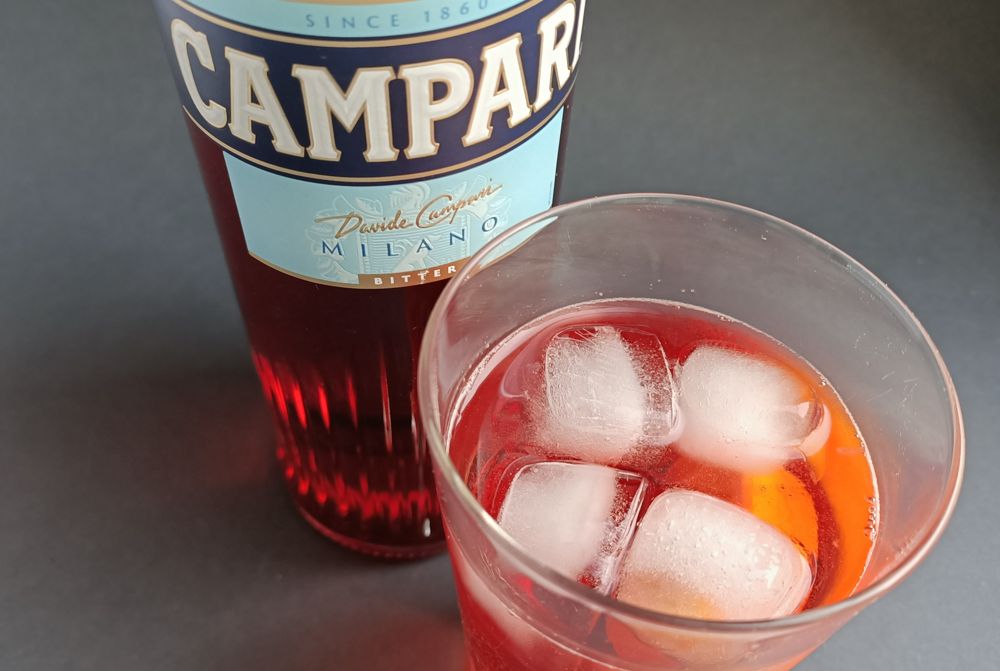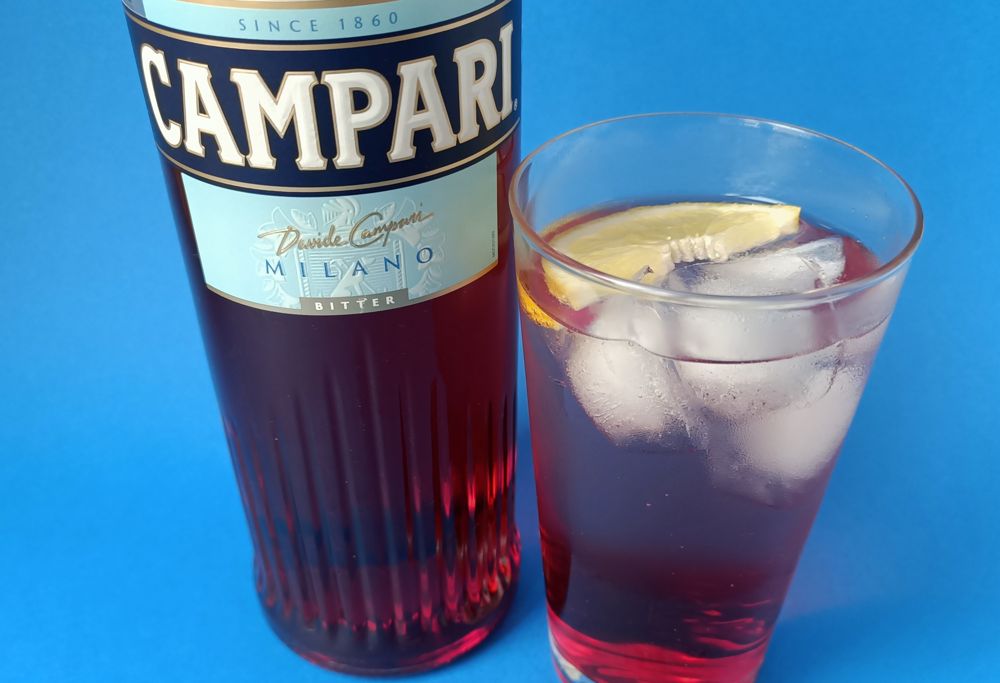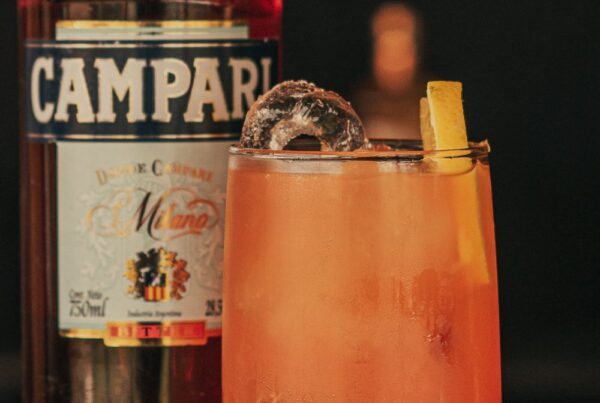Understanding what Campari is made from unlocks the secret behind its distinct flavors and color.
If you are curious about the vibrant red color or are wondering what gives it a bitter yet sweet taste, we’ve got it covered.
In this article, we’ll explore the simple yet fascinating ingredients that combine to create this iconic Italian liqueur.
The ingredients in Campari are a secret, but it is thought to contain a blend of 60 herbs, spices, fruits, and barks, including chinotto, a type of bitter orange.

Contents
- 1 What is Campari?
- 2 What Campari tastes like
- 3 Campari Ingredients
- 4 Is Campari made from bugs?
- 5 What herbs are in Campari
- 6 Campari alcohol content
- 7 How to drink Campari
- 8 Is Campari the same as Aperol?
- 9 What Campari does as an ingredient
- 10 What kind of liquor is Campari
- 11 What fruit Campari is made out of
- 12 Can you drink Campari straight?
- 13 What tree is Campari made from?
- 14 What is the red ingredient in Campari?
- 15 How many ingredients are in Campari?
- 16 What’s Campari good for?
What is Campari?
Campari is a vibrant, ruby-red Italian liqueur.
It was created in 1860 by Gaspare Campari in Novara, Italy. This iconic beverage has since become a staple in classic cocktails and a beloved aperitif worldwide.
What Campari tastes like
Campari has intense orange, herbal and floral aromas with a pleasant bitter aftertaste.
Campari Ingredients

Campari’s recipe is a closely guarded secret, but it is thought to contain a blend of around 60 herbs, spices, fruits, and barks.
Key ingredients are believed to include bitter orange, cascarilla, ginseng, quinine, and a secret blend of aromatic herbs and roots. The exact proportions and specific components are not known.
Some of the key ingredients believed to be used in Campari include:
Chinotto
Chinotto is a type of citrus that looks similar to a small orange. It has a bitter citrus flavor that makes it the perfect ingredient for Italian amari that are bitter in flavor.
Cascarilla
Cascarilla is a green plant with small, white aromatic flowers. It is a stomachic, which was used as a traditional medicine for healing stomach issues.
Many liqueurs and bitters began as medicines. Campari can be categorised as a bitters. Bitters are traditional alcoholic preparations flavored with botanical matter with bitter or bittersweet flavors.
Cascarilla contributes to the bitter flavors in Campari.
As you can see from the image above, there is not much detail in the ingredients listed on the label of the Campari bottle.
The top three ingredients are water, sugar and alcohol with everything else simple listed as natural aromas/flavors and colorants.

Is Campari made from bugs?
Campari’s color primarily comes from carmine dye, which is a synthetic and not insect-derived coloring.
The vibrant red color of Campari, once led to rumors about its ingredients because of the insect-derived crimson dye cochineal. Campari is not made from bugs-this is merely a popular misconception.
What herbs are in Campari
The precise herbs used in Campari are a well-kept secret; however, some likely ingredients include bitter orange peel and cascarilla.
These elements contribute to the liqueur’s characteristic bitterness and complex herbal flavor profile.
Campari alcohol content
Campari is between 20.5-28.5% ABV, depending on where it is sold in the world.
The bottle in the image below was bought in France and is 25% abv.

How to drink Campari
Campari can be enjoyed in various ways, either as a standalone apéritif served over ice with a slice of orange. It is also a key ingredient in several classic cocktails.
Popular cocktails featuring Campari include:
- Campari Spritz
- The Negroni
- Americano
For a twist on a classic Negroni with Campari, see our recipe for Port Negroni.
Is Campari the same as Aperol?
Campari and Aperol share some similarities, but they are distinct liqueurs. They are both Italian aperitifs, but their taste profiles differ significantly.
Campari has a stronger bitter flavor with more herbal complexity, while Aperol is lighter and sweeter. The two are often used interchangeably in cocktails, but their color and taste differences offer unique experiences.

What Campari does as an ingredient
Campari serves as a versatile ingredient in mixology, adding depth and complexity to cocktails. Its bitter-sweet profile acts as a palate stimulant, making it an ideal choice for apéritifs, stimulating the appetite before a meal.
Beyond its role in drinks, Campari the brand has also been involved in art and cultural collaborations, further enhancing its iconic status.
What kind of liquor is Campari
Campari falls into the category of herbal liqueurs, specifically known as bitters.
It also falls into the category of amari. Amari are Italian liqueurs made from a mix of herbs, roots, and spices that give them unique flavors. Amari can be bitter or sweet.
What fruit Campari is made out of
The peel of Chinotto, a type of bitter orange, is used to give Campari its distinctive citrusy and bitter flavor.
Can you drink Campari straight?
Yes, you can drink Campari straight! It’s often enjoyed on its own as an apéritif, meaning it’s sipped before a meal to stimulate the appetite.
Pour it over ice in a glass, and add a slice of orange, which will complement its bitter orange flavors.
What tree is Campari made from?
Campari is belived to contain bark as an ingredient, but as the ingredients are a closely guarded secret, we cannot say for sure what type of bark.
Some of the ingredients, like chinotto and various herbs, however, come from different trees and plants.
What is the red ingredient in Campari?
The red color in Campari comes from a dye called carmine, which gives it its vibrant, ruby-red appearance. It’s a synthetic dye and not derived from insects, despite some people thinking that it is.
How many ingredients are in Campari?
The exact list of ingredients in Campari is kept a secret, but it is believed to be made from a secret blend of around 60 different herbs, spices, fruits, and barks.
What’s Campari good for?
Campari is good for a few things!
Apart from being a delicious drink on its own, it makes a fantastic ingredient in cocktails. It’s famous for being part of classic cocktails like the Negroni and the Campari Spritz.
It’s also often sipped as an apéritif to get your taste buds ready for a meal. Some people also enjoy using it in cooking to add depth to certain recipes.
Read with confidence: I am WSET L2 Award in Spirits & Diagio Bar Academy certified.





